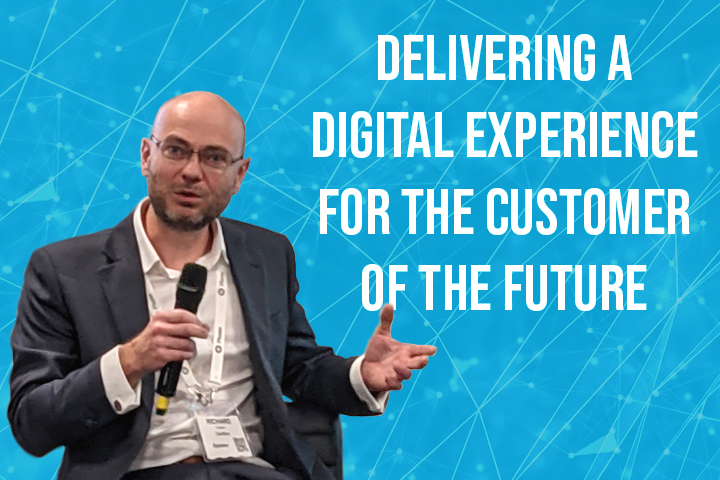Delivering a digital experience for the customer of the future

In the digital age, customer experience is as vital an area for transformation as services and infrastructure. What lessons can telcos carry over from B2C into the B2B market? Read the highlights from our recent Total Telecom Congress panel discussion.
This year’s Total Telecom Congress brought together 200 industry-leading speakers for two days of talks and debates, exploring the evolution of digital business models for the industry and the emerging technologies that will overhaul the modern telco customer experience.
One such panel discussion was Delivering a digital experience for the customer of the future, delving into how telcos can best utilise emerging digital technologies to reimagine and revolutionise their B2B customer experience, and featuring Richard Doughty, Cerillion’s Business Development Director, Vishal Patel, Director of Customer Experience EMEA at Lumen Technologies, Richard Owen, founder of OCX Cognition, and moderated by Teresa Cottam, Chief Analyst at Omnisperience.
Opening the discussion, it was highlighted that most customer experience initiatives to date have focused on the B2C market – as Richard Doughty put it, there used to be no such thing as “delighted and happy B2B customers”, they had to just accept what they were given. Now, the new horizon for telco customer experience is going to be in the B2B market, resulting in a hybrid B2B/B2C experience – and this paradigm shift will necessitate an influx of additional investment.
Richard Owen, who also helped establish the Net Promoter Score (NPS), pointed out that most B2B methodologies had evolved from B2C methodologies anyway. However, he stressed how these are now suffering due to the massive heterogeneity of customers – the data extrapolated from them is simply wrong.
How wrong? More and more evidence points to this data being of very limited use, since telcos aren’t getting survey responses from all groups of customers, and therefore the data extrapolated from them cannot be applied to those who do not respond.
Owen also argued against the notion that B2B customers should be treated as individuals. Companies are specific entities that will act a certain way, but won’t act in a simplistic fashion like B2C customers, with the individuals that make up a business entity subject to disproportionate influence from within.
However, Richard Doughty contended that, despite this, when surveying end customers, you’re still surveying an individual, not the business. And when this individual moves to another company, their loyalty usually goes with them. You may lose that loyalty from a particular company, but the relationship remains across individuals.
One of the key takeaways from the panel was that telcos should look outside of the industry for inspiration on how to improve their customer experience and marketing personalisation, because customers will be comparing their experiences with you to these other businesses whether you want them to or not.
Hotel chains, airlines, consumer brands – anywhere that is looking after its customers well on their purchasing journey provides lessons you can learn from. Vishal cited the likes of Disney as a perfect example of a business handling the customer journey very well, highlighting in particular how they manage the emotional side of the process. Disney, plus others from other industry verticals, have a myriad number of ways to digitally streamline their processes that businesses can adapt for their own.
Competence in data engineering and organisation is now crucial for success, as Lumen have successfully demonstrated. Their data-driven customer experience transformation has resulted in significant improvements in customer retention and churn reduction, and a whopping 40-point uplift in NPS. Impressive stuff.
The panellists all agreed that prevention is better than a cure, and most CX problems are cheaper to solve upstream in early lifecycle experiences and managing customer expectations, rather than in a contact centre downstream.
Much of what B2B telcos do can be automated – from lead engagement and sales, through to billing and service management – via self-service apps, digital assistants and “quasi-AI” systems. This digital engagement produces more and more data points, which can then be analysed to gain new customer insights and feedback into process improvements.
The right analytics strategy is therefore needed to ensure that telcos can collect, structure and use data in a meaningful way, taking action when necessary and engaging proactively with customers. Using machine learning, telcos can understand what “the norm” is for each individual customer or segment – their spend, usage, engagement, and identify any deviations from this behavioural baseline. The addition of AI can then anticipate customer problems and identify when certain “emotional tipping points” have been reached in their lifecycle.
Customer experience is just as important an investment for telcos as their services and infrastructure. And with many betting on the enterprise market for their future 5G revenue streams it is high time that the B2B customer experience is given the attention and investment it needs.

